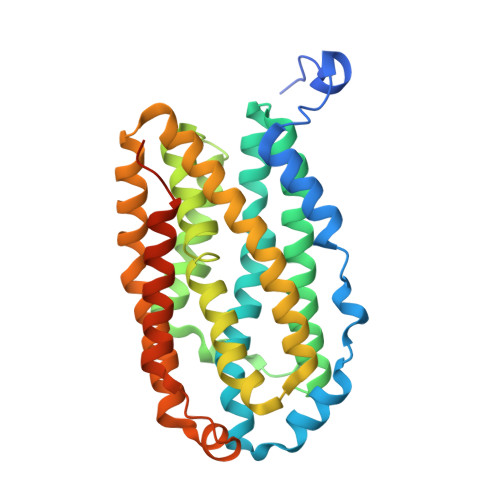Driving Protein Conformational Changes with Light: Photoinduced Structural Rearrangement in a Heterobimetallic Oxidase.
Maugeri, P.T., Griese, J.J., Branca, R.M., Miller, E.K., Smith, Z.R., Eirich, J., Hogbom, M., Shafaat, H.S.(2018) J Am Chem Soc 140: 1471-1480
- PubMed: 29268610
- DOI: https://doi.org/10.1021/jacs.7b11966
- Primary Citation of Related Structures:
5OMJ, 5OMK - PubMed Abstract:
The heterobimetallic R2lox protein binds both manganese and iron ions in a site-selective fashion and activates oxygen, ultimately performing C-H bond oxidation to generate a tyrosine-valine cross-link near the active site. In this work, we demonstrate that, following assembly, R2lox undergoes photoinduced changes to the active site geometry and metal coordination motif. Through spectroscopic, structural, and mass spectrometric characterization, the photoconverted species is found to consist of a tyrosinate-bound iron center following light-induced decarboxylation of a coordinating glutamate residue and cleavage of the tyrosine-valine cross-link. This process occurs with high quantum efficiencies (Φ = 3%) using violet and near-ultraviolet light, suggesting that the photodecarboxylation is initiated via ligand-to-metal charge transfer excitation. Site-directed mutagenesis and structural analysis suggest that the cross-linked tyrosine-162 is the coordinating residue. One primary product is observed following irradiation, indicating potential use of this class of proteins, which contains a putative substrate channel, for controlled photoinduced decarboxylation processes, with relevance for in vivo functionality of R2lox as well as application in environmental remediation.
Organizational Affiliation:
Biophysics Graduate Program, The Ohio State University , Columbus, Ohio 43210, United States.
















